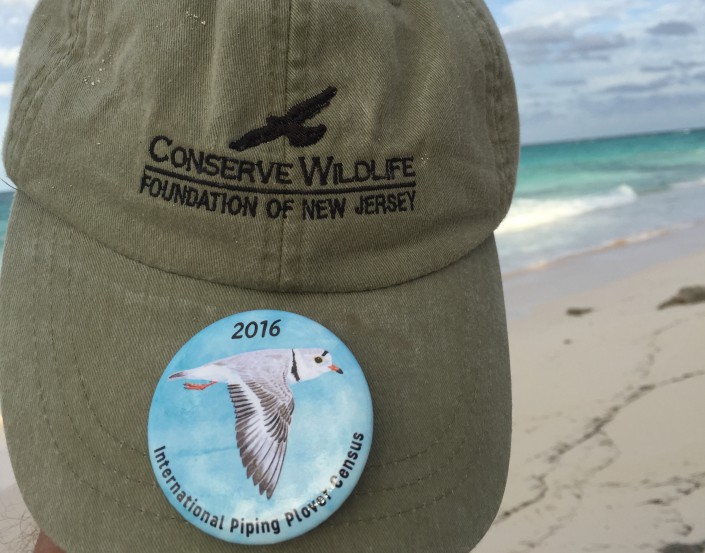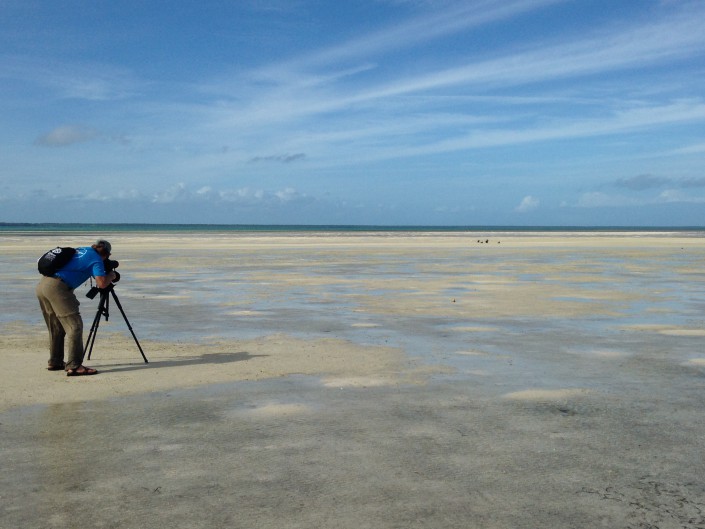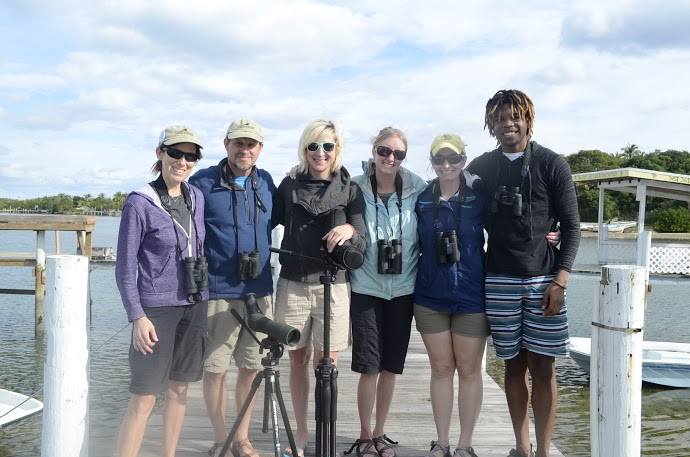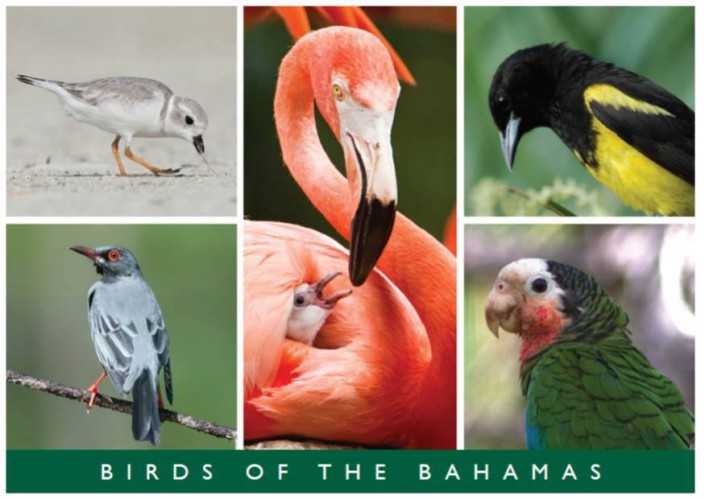Bahamas Revisited
Piping Plover Research and Conservation Five Years Later
by Todd Pover, Beach Nesting Bird Project Manager

The wintering segment of the 2016 International Piping Plover Census has just wrapped up in the Bahamas. This marks six winters of my own involvement with piping plover conservation work in the Bahamas – starting with the last international census in 2011 – so I thought it would be a good time to reflect on the changes I have observed in the years between the censuses.
First and foremost, we now know much more about how many piping plovers winter in the Bahamas and where they are located, including some areas where there are particular high concentrations of piping plovers and other shorebirds. This knowledge is due to the significant increase in survey effort put forth by partners in the Bahamas during the census, but also surveys conducted by Bahamas National Trust and National Audubon Society, as well as our own work at Conserve Wildlife Foundation of New Jersey (CWF), in the years since 2011 to supplement the earlier surveys and better understand how piping plovers use the sites.

This is demonstrated by the results of the 2016 census. As just one example of how this extra research paid off, in 2011 when we visited Casuarina Point on Abaco for the census, we knew from local birders and e-Bird that piping plovers were frequently seen there, but not that it was only for a narrow window during low tide to forage, nor that depending on wind conditions or disturbance, they could be at another more remote flat across Cherokee Sound. So in 2016, we had surveyors in place at the correct tide AND in both locations at the same time, thus allowing us to record 26 piping plovers, instead of 0 in 2011. Using similar information gathered across the island we found 178 piping plovers in 2016, compared to 76 in 2011 (and 82 on Eleuthera in 2016 vs. 30 in 2011).

Even with some oversights like those, the 1066 piping plovers tallied in the 2011 census revealed that the Bahamas was one of the most significant wintering locations for piping plovers, second only to Texas. And with band resight data, we now know that the Bahamas is THE most important winter location for the Atlantic coast population (as compared to the Great Lakes and Great Plains populations). Although the final count for the 2016 census is not complete yet, it has already topped the 2016 figure and will account for a good part of the remaining unknown wintering birds and locations. New surveys in the Turks and Caicos, more intensive surveys in Cuba, as well as the Southeast/Gulf Coast U.S. (which is critical for all three populations of piping plover) should make this the most comprehensive and informative survey to date.
While improved census results are important, one may reasonably still ask how the census is going to translate into better conservation. The Bahamas is a good example of what can be done with the data — last year the Bahamas government set aside the Joulter Cays as one of a series of new national parks, to a large degree based on its importance for shorebirds, especially piping plovers, as a result of information initially gathered from the census and follow-up surveys. This marked the first time shorebirds played a significant role in such a designation, so this is a watershed event for shorebird conservation in the Bahamas (and the Caribbean).
I have noticed other “sea changes” in attitude on a smaller scale. When I first visited the Bahamas (Abaco) during the 2011 census, aside for some birders, piping plovers were little known by the public there. Now when I come, I am recognized as the plover guy and piping plover bumper stickers can be spotted around the island on golf carts and trucks. There is even a new post card, entitled “Birds of the Bahamas” that has a piping plover side by side with a flamingo, the national bird. And there is refreshingly little of the rancor we sometimes have in the states over their protection – the habitats piping plovers use in the Bahamas, especially tidal flats, are also important for valuable resources, such as conch and bonefish, and other marine species, so protecting them is less of a conflict.

The important role the Bahamas plays in the piping plover life cycle is now much better known by the public and other stakeholders. Many of the participating partners have not only provided technical shorebird expertise during the surveys, but worked hard to provide education and outreach towards a long-term conservation goal. One area my colleague Stephanie Egger and I are most proud of in this realm is our Shorebird Sister School Network, where we pair up schools and students in the Bahamas and in New Jersey, using piping plover migration as the link. Now in its third year, this project is working to create a new generation of young conservationists (and piping plover lovers)!
This is not to say our work is done. There is still more to learn, a banding study is being conducted to help us better understand survival compared to other wintering (and breeding) regions, more detailed aspects of site fidelity, and how birds move around sites within islands. Still, piping plovers are no longer a novelty in the Bahamas as was largely the case when I first came in 2011. The challenge over the next five years will be how to harness the increased awareness and knowledge to aid recovery of this endangered species.
A special thanks to Friends of the Environment, who have been our piping plover partner on Abaco from the beginning, please check out all the great work they do! Also to the Disney Conservation Fund and The National Audubon Society for funding, as well as Bahamas National Trust for other support and the conservation work they do in the Bahamas in general. Thanks to the U.S. Geological Survey, sponsors of the International Piping Plover Census, for supporting CWF’s inclusion in the surveys. Thanks to Rolling Harbour Abaco for setting up the Abaco Piping Plover Watch this winter to help us keep track of piping plovers and raise local awareness. Thanks to those who participated in the CWF led 2016 census on Abaco and Eleuthera: Brendan Toote, of the College of the Bahamas, Michelle Stantial, of SUNY – ESF, Pam Prichard, and CWF’s own Stephanie Egger and Emily Heiser. And finally, thanks to our local citizen scientists on Abaco who participated in or provided valuable knowledge for the 2016 census, especially Ali Ball, our “super” volunteer!
Learn More:
- Conserve Wildlife Foundation’s Beach Nest Bird Project
- Conserve Wildlife Foundation’s online field guide: piping plover
Todd Pover is the Beach Nesting Bird Project Manager for Conserve Wildlife Foundation of New Jersey.